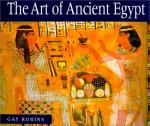|
This section contains 846 words (approx. 3 pages at 300 words per page) |

|
Rations. Wage payments in the Old Kingdom (circa 2675-2130 B.C.E.) are known from the Abu Sir Papyri written during that period. In the Middle Kingdom (circa 1980-1630 B.C.E.) there are temple documents, biographies, and archaeological data that include information about wages. New Kingdom (circa 1539-1075 B.C.E.) wages are known from Deir el Medina and from documents pertaining to shipping. All of these sources show that wage payments were made in rations of bread, beer, grain, meat, and cloth that were the necessities of life.
Bread and Beer. Most often rations were expressed in units of bread and beer, the two staples of an Egyptian diet. It seems likely that the lower salaries, which were close to subsistence level, were actually paid in bread and beer. Just as modern coins are guaranteed to contain standard amounts...
|
This section contains 846 words (approx. 3 pages at 300 words per page) |

|




